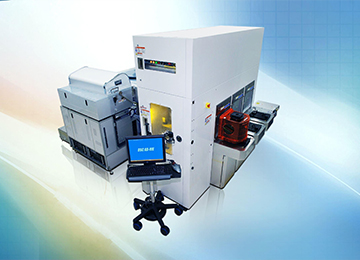In the field of high-end manufacturing, the one-piece conductive beam technology is becoming an important solution for key functional components due to its advantages such as high structural strength and stable conductive performance. With the advancement of materials science and precision machining technology, the research and development of this technology has been continuously deepened, and it has been more widely used in multiple industries, providing new technical support for the development of related industries.
1. Key breakthroughs in technology research and development
The core of the one-piece conductive beam technology is to achieve the integrated design of conductive and structural support functions through precision machining technology, thereby reducing the contact resistance and structural instability problems caused by traditional assembly methods. Recently, domestic scientific research teams have made progress in the molding process of high-strength conductive materials, and further improved the mechanical properties and conductive efficiency of conductive beams by optimizing heat treatment and precision stamping technology. In addition, the application of new composite materials enables conductive beams to maintain stable performance in harsh environments such as high temperature and high humidity, extending their service life. In terms of manufacturing technology, the introduction of additive manufacturing technology has made it possible to customize the production of complex structure conductive beams. Some companies have achieved small-batch trial production of high-precision 3D printed conductive beams, which has reduced production costs and improved product design flexibility.
2. Continuous expansion of application areas
With the improvement of technology maturity, the application scope of one-piece conductive beams is extending from the traditional electronics industry to high-end equipment, new energy, aerospace and other fields. In electronic equipment, this technology is used for high-density connectors and precision sensors, which improves the stability of signal transmission; in the field of new energy, high-performance conductive beams can optimize the current distribution of battery modules and improve energy conversion efficiency; and in aerospace equipment, lightweight and high-strength conductive structural parts help reduce the overall weight while ensuring the reliability of the electrical system. In addition, the growing demand for high-precision conductive components in industrial automation equipment has also promoted the iterative upgrade of one-piece conductive beam technology. For example, in robot joint modules and precision transmission systems, integrated conductive beams can reduce line losses and improve the accuracy of motion control.
3. Future development trends
Although the one-piece conductive beam technology has made significant progress, there is still room for improvement in ultra-precision processing and material performance optimization. In the future, with the in-depth application of intelligent manufacturing technology, this technology is expected to play a role in more high-end scenarios. At the same time, collaborative innovation in the upstream and downstream of the industrial chain will accelerate the implementation of technology and promote the development of related industries towards higher performance and higher reliability. It can be foreseen that the one-piece molded conductive beam technology will continue to evolve in the direction of high performance, lightweight and low cost, and will be applied on a large scale in more key areas, injecting new impetus into the development of high-end manufacturing.





